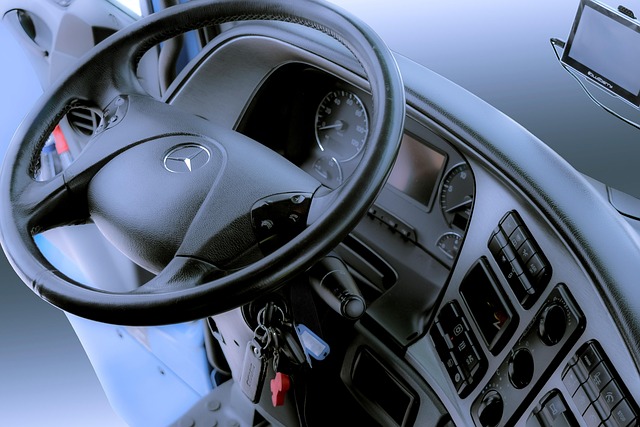Looking to register your car in California? It’s a straightforward process, but understanding the requirements is key. This guide breaks down the steps involved, from gathering essential documents for VIN verification to completing the online registration or visiting a DMV office. We’ll walk you through each phase, ensuring a smooth experience. Remember, accurate VIN verification is crucial, so let’s get started!
- Understand California Car Registration Requirements
- Gather Necessary Documents for VIN Verification
- Perform Vehicle Identification Number (VIN) Check
- Complete Online Registration or Visit DMV Office
- Pay Registration Fees and Receive Your Plate
Understand California Car Registration Requirements

Before registering your car in California, it’s crucial to understand the state’s specific requirements. The process involves several key steps, including thorough vehicle inspection and proper documentation. One critical aspect is ensuring accurate and legitimate Vehicle Identification Number (VIN) verification. This process checks the VIN data against national databases to confirm its authenticity and history, a step often facilitated through mobile vin inspection or inspection services.
California requires that all vehicles meet safety standards and emissions regulations. For non-commercial vehicles, you’ll need proof of insurance, a completed application form, and payment for registration fees. Additionally, a mobile vin verification may be required to ensure the vehicle’s title is clear and to prevent potential fraud. This comprehensive approach helps protect both car owners and the state by maintaining a reliable vehicle registry.
Gather Necessary Documents for VIN Verification

Before you begin the registration process, it’s crucial to gather all the essential documents for VIN (Vehicle Identification Number) verification. This step is a critical part of ensuring your car’s history and authenticity are accurately represented. You’ll need to provide proof of ownership, which can be in the form of a title or a bill of sale. Additionally, a valid driver’s license and insurance card are mandatory. For a seamless process, consider having a mobile vin verifier perform a remote inspection, as this service allows for convenient and accurate VIN verification right from your location.
Having these documents ready ensures that the registration process runs smoothly and reduces potential delays. Remember, clear documentation is key to a successful car registration in California. With all necessary paperwork in order, you can confidently move on to the next steps of registering your vehicle.
Perform Vehicle Identification Number (VIN) Check

Before registering your car in California, it’s crucial to perform a Vehicle Identification Number (VIN) check. This step ensures that the vehicle’s history is clear and matches the information provided by the manufacturer. A VIN verification process helps in detecting any potential issues like odometer rollback, reported accidents, or outstanding loans on the vehicle. You can conduct this inspection yourself using a mobile VIN verifier or consult a professional to ensure accuracy.
In California, a valid VIN inspection is an essential document when registering your car. This check ensures that you’re providing accurate and genuine information about the vehicle’s history, which is vital for both legal compliance and personal peace of mind. Consider using a mobile vin verification service to make this process convenient and efficient.
Complete Online Registration or Visit DMV Office

You have two options for registering your car in California: complete the process online or visit a DMV office in person. Both methods require preparing essential documents and information, including your vehicle’s registration form, proof of insurance, and identification. Before you begin, make sure to have your Vehicle Identification Number (VIN) ready for verification purposes.
For a convenient option, consider using a mobile VIN verifier or conducting a mobile VIN inspection. This allows you to verify your vehicle’s history and ensure it meets California’s requirements remotely. Once all documents are in order, you can either submit the registration online or drop them off at the DMV to finalize the process.
Pay Registration Fees and Receive Your Plate

After completing your vehicle’s registration application, the next step is to pay the required fees. In California, these fees cover various costs associated with vehicle regulation and road maintenance. The amount due will depend on factors such as the type of vehicle, its age, and whether you’re transferring ownership or registering a new purchase. Payment can typically be made online or at designated registration centers using secure methods like credit cards or checks.
Once your payment is processed, you’ll receive your unique California license plate. This plate is more than just a designation; it’s a crucial component of vehicle identification, linked to your car’s VIN (Vehicle Identification Number) through a rigorous vin verification process. The state may offer the option for mobile vin verification or a vin inspection to ensure accuracy and streamline the registration experience.
Registering a car in California involves understanding state requirements, gathering essential documents, and completing either an online registration or a visit to the DMV office. After confirming your vehicle’s identity through a crucial Vehicle Identification Number (VIN) check, you’ll pay the necessary fees and receive your unique license plate, ensuring your vehicle is legally registered and ready for California’s roads. Remember that a thorough VIN verification is key to navigating this process smoothly.
